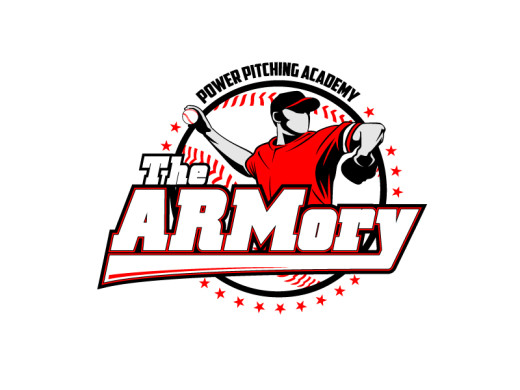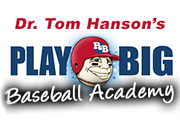Ice is for Cocktails. Not for Pitchers.
Hello again,
I watched a couple of games this weekend and something caught my attention. I saw a young man come in to pitch for one inning, maybe 15 pitches, and when he walked out of the stadium, he had his shoulder and elbow totally wrapped in ice.
You know, the really cool looking ice wrap where the trainer rolls that cellophane thing that looks like a lint roller round and round and turns the limb into a see-through mummy arm?
As he walked by I said, “Nice job today.”
At least that’s what I said on the outside.
On the inside I said, “Wow. You must really be in a lot of pain. I wonder what kind of mechanical or physical constraints you have that would put you in that much pain after such a seemingly non-taxing performance.”
Not one to leave well enough alone, in my outside voice I asked, “Does your arm hurt?” To which he responded, “No, I always ice after I pitch.”
Again in my outside voice I said, “Oh.”
But the voice inside my head said, “OK, so if you’re not in acute pain, there are only 3 possibilities:
1) You have a trainer who doesn’t understand tissue healing and recovery,
B) You really enjoy the attention you get when everyone in the ballpark and parking lot notices your big ice pack and knows you pitched today, or
3) You are on the way to a major kegger and you need to ice down some drinks when you get there.
(hehe, see what I did there?)
I’m not judging here. Just observing. If someone feels very strongly about using ice, I really don’t care, but this is something that I see all the time and it puzzles me to no end.
The practice of prophylactic icing probably began with the assumption that the soreness after throwing is either due to delayed onset of muscle soreness (DOMS) caused by lactic acid build up, or to an acute inflammatory response.
Some studies have indeed shown that the application of ice for 20 minutes immediately after an anaerobic activity like heavy weight lifting can reduce the symptoms of DOMS caused by lactic acid build up.
However, we know from a 2004 study that after 7 innings of pitching there is absolutely zero lactate in the blood, so that myth has definitely been debunked. With no lactate present classic DOMS does not exist.
And don’t even get me started on “flush runs” (Check out my blog on distance running for more on that topic).
Additionally, I rarely see pitchers with classic signs of acute inflammation after throwing.The signs of acute inflammation are: severe pain, redness, swelling, and heat. Much like the young man I saw this weekend, the pitchers I see are not usually experiencing severe pain or swelling after throwing. And the only redness I see is from the ice they have applied.
So if lactic acid build up and/or inflammation are not the cause of post pitching soreness, the only remaining explanation would be micro trauma to the muscles, tendons and, ligaments. The soreness pitchers feel is most likely due to the cumulative effect of microscopic tears in the fibers of the muscles, tendons, and ligaments.
To begin rebuilding tissues damaged by micro trauma, you need blood flow. Ice is an inhibitor of blood flow.
To help you understand what I’m talking about, I’ll need to explain a little about the physiology of tissue healing.
Floating around throughout the circulatory system, in the platelets of the blood, are trillions of cells called undifferentiated mesenchymal cells (UMCs). UMCs are very similar to the highly controversial embryonic stem cells in their function and behavior, except that embryonic stem cells are way more prolific. In fact, embryonic stem cells are like UMCs on major steroids.
These UMCs are like unlabeled white-coated utility men. They have no specific funcion or character until tissue damage occurs. Then they rush to the scene of an injury and wait for orders as to what exactly is needed to start the repair process. When they receive their instructions they are miraculously able to morph themselves into whatever type of cell they need to become to repair the injured tissue. For example, if the injury is to a bone they change themselves into osteoblasts (or bone cells). If the injury is to a muscle, they become a muscle cell. If then injury is to a tendon they become a tendon cell, and so on. This process is known as cell differentiation.
Note: In the past 5 years or so, some orthopedic doctors have been taking advantage of the healing properties of UMCs by performing PRP (Platelet Rich Plasma) injections as a hotly debated treatment for injured athletes. In this procedure, physicians draw blood for the uninvolved limb and spin the blood in a centrifuge to isolate and extract the platelets (which is where most of the healing agents are located). The platelet rich plasma contains tons of the UMCs. Once isolated the platelets are then injected directly into the injured tissue to accelerate the healing process.
There are 2 factors that must be present to enact the repair phase of tissue healing:
1) UMC delivery
1) UMC Delivery
UMCs are transported in the platelets of the blood. So their delivery to the area depends on blood flow. No blood equals no healing and no repair. For this reason I do not advocate ice after pitching. Ice is a vasoconstrictor, which means it causes blood vessels to close up, and it reduces the amount of blood flow to the effected tissue. Less blood flow means fewer UMCs in the area.
But there is an exception to my icing objection.
Again, the signs of acute inflammation are: severe pain, significant swelling, redness, and increased skin temperature. So if a pitcher throws and then presents with an area that is red, hot, swollen and painful, then ice for about 48-72 hours is indicated.
In the absence acute inflammation, ice is unnecessary and may retard tissue healing and overall recovery.
Die-hard ice proponents, when confronted with the physiology of healing, point to a phenomenon called “The Hunting Response”. As it turns out, the body has a built in defense for prolonged exposure to cold.
The initial response to cold is constriction of the blood vessels.
After about 10 minutes of icing, a protective anti-frostbite reflex kicks in, and the arteries dilate resulting in a rush of blood to the area. Like a hose kinked off and then released, blood is initially held back and then flooded into the area.
My contention is that if blood flow and the delivery of UMCs is the goal, why not just let it flow steadily or even turn the faucet up just a little to activate the restoration process?
2) Activating Cell Differentiation
So now we know that we need blood flow to deliver UMCs. The next step is to activate the differentiation process. To do this we must understand how the UMCs receive their instructions?
How do they know what kind of cell they need to become?
There are 2 processes for damaged tissue to communicate with UMCs:
Chemical and Mechanical.
Damaged cells release chemical flares that communicate with UMCs to activate cell differentiation. Those happen automatically and are completely out of our control.
But UMCs also respond to mechanical stimuli.
When damaged tissues (even microscopically damaged tissues) move, UMCs are drawn to the site and are stimulated not only to morph into the appropriate type of cell, but they are also guided as to exactly where and in what formation to deposit themselves after they differentiate. Mechanical stimulation of damaged tissue guides the remodeling process.
So how do we manage mechanical stimulation of damaged tissue?
What I recommend for recovery is to stimulate blood flow and to activate cell differentiation through restorative functional movement.
To have the greatest effect, restorative movement must be very specific. As closely as possible, it should mimic the the exact movement required for the performance of the activity that produced the damage.
But the movement must be at a very low intensity.
The pain is your guide.
If restorative movement elicits any pain at all, it is too intense and should be avoided. Failure to remain below the pain threshold could cause further tissue damage or an escalating inflammatory response.
Arms made sore from throwing should be taken through pain free throwing movements.
Pain free functional movement will promote task-specific blood flow, delivering UMCs directly to the areas of need, and it will send the exact mechanical signals for cell differentiation and deposit.
So here’s the plan:
When you’re done with your outing, go down to the bullpen and do some arm care exercises like our scapular IYT program, scapular pushup series, sleeper stretches (if GIRD is one of your issues), or any other corrective exercises for physical constraints you might have.
Then do some 7 ounce weighted ball sock holds.
For more on our sock holds check out this Rocet Science Live Presentation I did a few months ago. Click here.
Low intensity holds after pitching will be non-taxing and will provide a functional stimulus for blood flow directly to where it is needed. The holds will move the arm in the exact pattern it uses when pitching, and it will send specific mechanical signals for UMC differentiation and deposit. This will begin the process of tissue healing.
I think you’ll find this practice will allow you to recover more quickly and you’ll be able to answer the bell with your best stuff every time the coach calls your number.
And you can take the ice to the party to celebrate your dominating performance.
Until next time,
Hold the ice please.










Leave a Reply